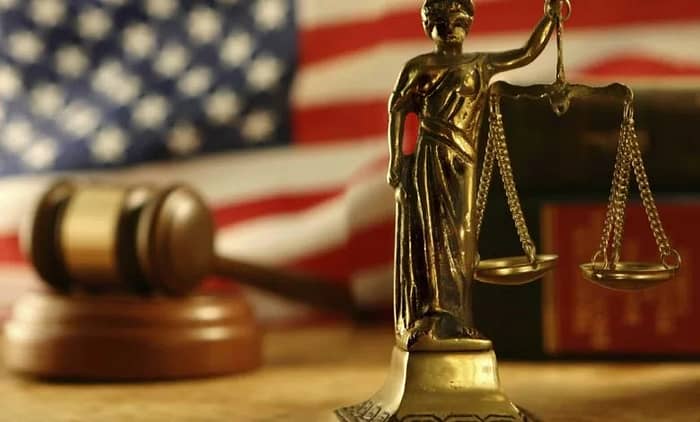By: Mike Maharrey Originally Published on: Dec 7, 2018

We hear them over, and over, and over again — the same, tired, worn out misconceptions or downright lies about nullification.
Historians, legal scholars and journalists all parrot these fallacies every time anybody proposes nullification. They use these misconceptions as a way to derail efforts to stop federal overreach and limit the power of the general government. Some of them sound plausible — especially if you were a product of government schools. But all of them are wrong.
Following are the top five lies about nullification and a brief overview of why they’re wrong.
1. The Supremacy Clause Prohibits Nullification
This probably ranks as the most common nullification objection. According to the naysayers, the Constitution’s supremacy clause makes every federal edict “the supreme law of the land.” As such, a state has no authority to challenge it in any way. This erroneous assertion ignores the most important words in the clause. Only the Constitution and laws “made in pursuance thereof” qualify as supreme. Any federal act not in pursuance of the Constitution is, as Alexander Hamilton put it, “void.”
One does not obey or enforce a “voided” act. In fact, James Madison asserted that a state is “duty bound” to “interpose” when the federal government attempts to operate outside of its constitutional bounds. The supremacy clause does not undermine nullification. It actually enforces it. To learn more, click HERE and HERE,
2. John C. Calhoun Invented Nullification
Virtually every mainstream article about nullification invokes the name “John C. Calhoun.” Most of them will assert that he came up with the idea for state nullification. This, of course, is meant to tie the principles of nullification to slavery, as the South Carolina senator was an unapologetic supporter of the institution.
It’s true that Calhoun was a central figure in the so-called “nullification crisis” in the early 1820s and 1830s. But this had nothing to do with slavery, and he did not come up with the idea of nullification.
In fact, Thomas Jefferson and James Madison first formalized the principles in the Kentucky and Virginia Resolutions two decades earlier in response to the passage of the Alien and Sedition Acts. These laws enacted by Pres. John Adams in 1798 were clear violations of the due process clause, the First Amendment and the Tenth Amendment. Jefferson and Madison both insisted a state had both a right and duty to step in and stop the overreach. It was Jefferson who insisted nullification is “the rightful remedy.”
“Where powers are assumed which have not been delegated, a nullification of the act is the rightful remedy: that every State has a natural right in cases not within the compact, (casus non fœderis) to nullify of their own authority all assumptions of power by others within their limits.”
Jefferson and Madison were working on a strategy to implement nullification after the Kentucky and Virginia legislatures passed their respective resolutions, but Jefferson’s ascendancy to the presidency and the subsequent end of the Alien and Sedition Acts rendered the issue moot.
Obviously, this has nothing to do with Calhoun. The principles were well-established long before Calhoun invoked them. But unsurprisingly, articles about nullification almost never mention Jefferson or Madison. To learn more, click HERE, HERE, HERE and HERE.
3. James Madison Opposed Nullification
Despite the fact that James Madison penned the Virginia Resolutions and was one of the first people to formalize the principle of nullification, pundits invoke a second common misconception claiming Madison actually opposed the idea. They rely on arguments he made during the aforementioned nullification crisis in the late 1820s and early 1830s, but they take his comments out of context.
In fact, Madison opposed a specific nullification scheme developed by Sen. John C. Calhoun. He never renounced the general principles.
Calhoun built on the ideas outlined in the Kentucky and Virginia Resolutions and claimed that if a single state nullified a federal act, it was annulled within that state and it legally bound other states to honor its action until three-quarters of them overruled the nullification.
Madison’s anti-nullification comments specifically addressed this scheme. But Madison did not condemn the more general principles of state nullification. In fact, Madison reaffirmed the idea even while opposing Calhoun’s version, writing,
“Thus the right of nullification meant by Mr. Jefferson is the natural right, which all admit to be a remedy against insupportable oppression. It cannot be supposed for a moment that Mr. Jefferson would not revolt at the doctrine of South Carolina, that a single state could constitutionally resist a law of the Union while remaining within it, and that with the accession of a small minority of the others, overrule the will of a great majority of the whole, & constitutionally annul the law everywhere.”
To learn more, click HERE.
4. The Supreme Court Decides Constitutionality
Even if they admit that federal actions violating the Constitution have no legal force, modern pundits will always claim that it’s the Supreme Court’s job to determine the constitutionality of an act — not a state. They will usually refer to John Marshall’s famous opinion in Marbury v. Madison to bolster their case.
In effect, these people argue that the federal government determines the power of the federal government. Thomas Jefferson pointed out the absurdity of this notion in the Kentucky Resolutions.
“The government created by this compact was not made the exclusive or final judge of the extent of the powers delegated to itself; since that would have made its discretion, and not the Constitution, the measure of its powers; but that, as in all other cases of compact among powers having no common judge, each party has an equal right to judge for itself, as well of infractions as of the mode and measure of redress.”
In the Report of 1800 (a defense of the Virginia Resolutions) Madison also insisted that the Supreme Court only had the final say in a dispute between the three branches of the government, but not in a dispute over federal power in relation to the states.
“The States then being the parties to the constitutional compact, and in their sovereign capacity, it follows of necessity, that there can be no tribunal above their authority, to decide in the last resort, whether the compact made by them be violated; and consequently that as the parties to it, they must themselves decide in the last resort, such questions as may be of sufficient magnitude to require their interposition.”
As far as Marshall’s opinion in Marbury goes, most people take what he said out of context. And regardless, it’s ludicrous to argue that the Supreme Court decided it has the final say, therefore it does. To learn more click HERE, HERE, HERE, and HERE.
5. Nullification Supported Slavery
The final common misconception trumpeted over and over again is that nullification was all about slavery. Again, this is meant to tar the idea as “racist.” Actually, it nullification was about slavery, but not in the way the mainstream wants you to believe.
In fact, nullification was never used to support slavery. Slavery was the law of the land according to the federal government. There was nothing for slavers to nullify.
But abolitionists did use the principles of nullification and state powers to fight the fugitive slave acts.
The Fugitive Slave Act of 1850 was enacted to aid southern slavers in their efforts to reclaim their “property.” It allowed a slave owner, or his representative, to haul a black person back South into slavery merely on his world. It denied an accused runaway any semblance of due process. It also compelled citizens to assist in fugitive slave rendition if ordered to do so and made assisting suspected runaways a federal crime with stiff penalties.
But at the state level, northerners rebelled. They asserted state sovereignty and passed aggressive personal liberty laws to thwart execution of the act. In support of their stand, apologists appealed to the notion of “states’ rights,” sometimes directly quoting arguments advanced by John C. Calhoun during the “Nullification Crisis” decades earlier. These abolitionist efforts were so successful, South Carolina and several other seceding states listed northern state nullification of the fugtiive slave laws as justification for leaving the union — and they used the word nullification.
So, nullification was “about slavery,” but it never supported slavery. To Learn more, click HERE.
Michael Maharrey [send him email] is the Communications Director for the Tenth Amendment Center. He is from the original home of the Principles of ’98 – Kentucky and currently resides in northern Florida. See his blog archive here and his article archive here. He is the author of the book, Our Last Hope: Rediscovering the Lost Path to Liberty., and Constitution Owner’s Manual.
You can visit his personal website at MichaelMaharrey.com and like him on Facebook HERE
Original article can be viewed here
Note: The views expressed on vinceiori.org are not necessarily those of Vince Iori, Vince’s Blog, or Vince Iori Live.

You must be logged in to post a comment Login